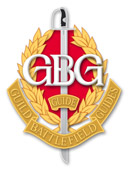Fields of Battle - Lands of Peace: 14-18
Fields of Battle, Lands of Peace was first shown in Passchendaele in 2007 and since then it has been shown in seven countries and received over five million visitors. The work is presented as an outdoor exhibition in public places. This enables the greatest number of people access in the hope that even those who have no interest or immediate connection will become involved in appreciating the history of events which shaped the 20th century.
And it all started as the result of re-visiting Dunkirk with my father who served there in 1940 with the London Irish Rifles. Oddly enough he featured in what has become one of the iconic images of that battle but what came as a complete surprise to me was the extraordinary memory which he had for what appeared to me to be feature-less fields. His soldier's eye was able to match the angles of church towers to the trenches they had dug and for the first time I appreciated the importance to the infantryman of even the merest ripple on the surface of a field. We visited Ypres and I watched him as he stood erect at the Menin Gate, fighting back his tears: it was an emotion I had never been exposed to before and in 2005, aware of the approaching centenary, I began to think about producing a book about the landscapes of the First World War as they are today.
The men of 1914-18 largely saw the land torn apart and stripped of its covering mantle of grass and trees, it's bones literally laid bare as they sought shelter within its protective skin. Today living memory of those times has, sadly, all but disappeared but the landscape, which was the setting for those tumultuous events, still reflects its violent past. Nature may have healed the tortured landscape of the battle but the searching eye can frequently spot the place where concrete and steel push upwards from the soil like some strange fungus and the imprint of fighting trenches indicate where men fought and died. For me, the challenge is to combine the elements of light and land to document the dramatic history of these fields.
I started working on this project in conjunction with the late Prof Richard Holmes, the eminent military historian and writer who sadly died in April 2011. Richard was a magical man whose enthusiasm and knowledge were instrumental in conceiving this project which is now well on its way towards its intention of documenting the fields of battle of the First World War as they are today, 100 years after their devastation. I miss Richard more than I can say and I can only hope that my work will stand as a fitting tribute to the inspiration and encouragement which he gave in such huge measure.
These fields of battle extend far beyond the 600 kms. of the Western Front which stretches from the coast of the English Channel, across Belgium and northern and eastern France to the Swiss border. This project has taken me from the wilderness of the Namib Desert to the forest of eastern Europe, from the vast expanse of the Atlantic Ocean to the vertiginous walls of the Dolomites.
These are all places where men fought and died: a century ago they were places of suffering and horror but today time and nature have eased the scars of war and created landscapes of great beauty and tranquillity. But these pictures are not just a commemoration of that war but a celebration of the reconciliation between the combatants: as we stand and reflect upon the war let us consider our own times and conflicts and ponder on what legacy we will leave for future generations.
About Me
After studying Geography at Oxford, in the early 1970's I began my life as a photo-journalist by covering "the Troubles" in Northern Ireland. Here I became associated with the New York picture agency, Black Star and over thirty years later I am still in the fortunate position of being paid to do what I actually love doing - taking photographs.
Being a photographer is an extraordinary life - it certainly beats working for a living - and has enabled me to visit over 60 countries around the world, working for a wide range of clients such as ABC-TV, BBC, Anti-Slavery International, British Red Cross, European Commission, National Geographic, New York Times, Shell, "Time" & "Time Life.
This project is proving to be a marvellous experience - I am proud to have qualified as the 38th badged member of the Guild of Battlefield Guides whose members are proving an invaluable source of both practical and scholarly information on any subject I enquire about. As I travel I never cease to be amazed by the tolerant acceptance of my frequently bizarre requests and the extraordinary efforts which people make to understand my mangled "franglais". In a venture of this scale it is almost inevitable that errors will creep in: please accept my apologies if you spot anything you consider inaccurate and let me know so that I can ensure the integrity of this collection.
And finally my thanks to the designer of this web-site, Geza Turi who has accepted all my changes with total equanimity and has done a great job on a tight budget.
Mike St Maur Sheil
August 2016
Badge Member [ No. 38 ] International Guild of Battlefield Guides
